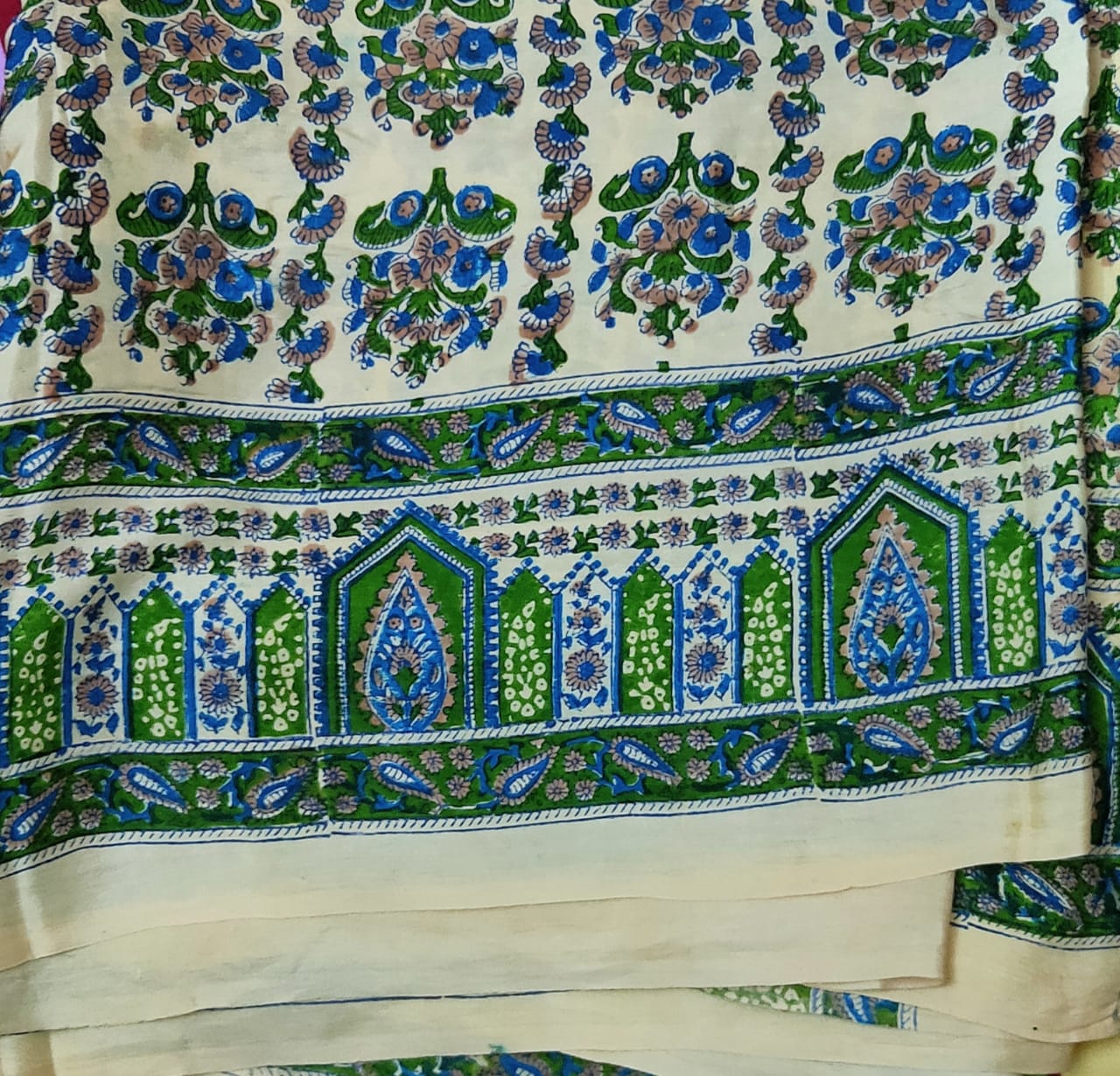Habutai Silk Saree (Part 1)
Habutai (also, Habotai or Habutae) is a basic plain weave of silk fabric. A plain weave (also known as tabby or taffeta) is very common in the textile world. In this weave, the warp and weft align each other to produce a criss-cross pattern. The Japanese word 'habutae' (???) means 'feather-two-layer' when translated. Traditionally, it was woven in Japan and its lightweight and shimmery material was best suited for making kimonos in particular. However, most of the Habutai weaving now takes place in China (and hence, popularly referred to as China silk by many customers and sellers). At the most basic level, it is a lining silk, but it is used to make a variety of products like tee-shirts, lampshades, blouses and sarees. This is possible due to Habutai silk's quality to be easily dyed, having weight variations, and being light and soft as a feather.
The etymology of the word 'habutai' can also be traced back to French, where it is known as 'toile'. This term does not only refer to silk, but to natural fabrics with a repeating printed pattern as well. In contrast, the Japanese term 'habutai' applies to solid styles too; nonetheless, these two terms are perceived as alternatives of each other.
This particular saree, made out of pure Habutai silk, was purchased in 1989 from Rajbagh Factory in Srinagar.
Contributed By :
Aaliyia Malik
